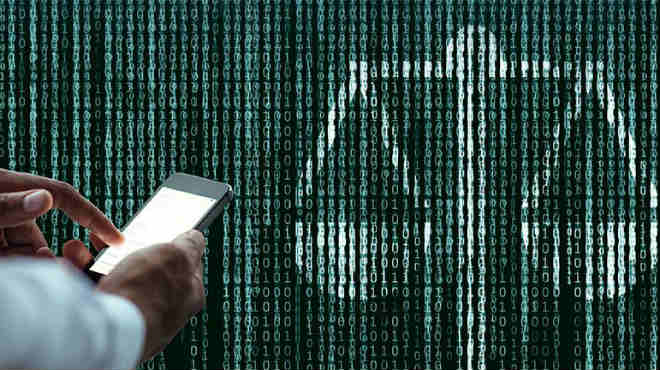ELECTRONICALLY GENERATED EVIDENCE IN THE NIGERIAN JUDICIAL SYSTEM – Michael Finnih*[1]

INTRODUCTION
The Nigerian judicial system in the past has experienced a rapid growth in the area of digitalization resulting from the immense use of computers in the daily life of the Nigerians in their various transactions. Incidentally, the more the growth of this computerization the more the need to improving our judicial system to address any legal tussle that may ensue therefrom.
It is flowing from the above that the Nigerian Legislators, amended the Evidence Act of the country to take care of possible legal problems that may come from computerized transactions in the country. In the last few years, the use of electronic devices in our judicial system has grown tremendously, and the rate at which the profession is embracing it is increasing on a daily basis. Incidentally, case may be lost or won on the strength of a particular piece of electronic evidence that has been admitted or rejected as the case may be.
Our focus under this topic is on the following sections of the Evidence Act in relation to the issue before us: Section 84 Evidence Act 2011; Section 51 Evidence Act 2011; and Section 258 Evidence Act 2011
Similarly, we would consider the locus classicus case of Kubor v. Dickson where the court has elaborately examined the position of the Evidence Act 2011[2] on electronically generated evidence in line with the provision of the Evidence Act.
Computer by the definition of the position of the Evidence Act 2011 means any device for storing and processing information, and any reference to information being derived from other information is a reference to its being derived from it by calculation, comparison or any other process.[3]
Section 84(1) provides that in any proceedings, a statement contained in a document produced by a computer is admissible as evidence of any fact stated in it of which direct oral evidence would be admissible, if it is shown that the conditions in Section 84(2) are satisfied.
By interpretation, the four conditions for admissibility of computer-generated evidence are set down in Section 84(2) and they are as follows:
- the statement sought to be tendered was produced by the computer during a period when it was in regular use;
- during that period of regular use, information of the kind contained in the document or statement was supplied to the computer;
- the computer was operating properly during that period of regular use; and
- the information contained in the statement was supplied to the computer in the ordinary course of its normal use.
Section 84(4) requires that the party which seeks to tender a computer-generated statement or document shall file a certificate for the purpose of
- identifying the document or statement;
- describing the manner of its production;
- stating the specifications of the device used in the production of the document; and
- signed by a person occupying a responsible position in relation to the operation of the relevant device or the management of the relevant activities.
Entries in books of accounts or electronic records regularly kept in the course of business are admissible whenever they refer to a matter into which the court has to inquire but such statements shall not alone be sufficient evidence to charge any person with liability.[4] It is worthy of note that Section 84(2)(4) of Act is a condition precedent that must be followed before documents generated by computer can be admissible in our courts.
THE KUBOR V. DICKSON’S CASE
Brief Fact
The appellants challenged the election and return of the first Respondent as the governor of Bayelsa State in the February 11, 2012 governorship election. The documents tendered by the appellants included a computer printout of the online version of The Punch newspaper and another document from the website of the Independent National Electoral Commission (INEC), the third respondent in the appeal. The electronic version of The Punch was admitted and marked as Exhibit D and the document from INEC’s website was admitted and marked Exhibit L. However, the appellants did not satisfy the conditions provided in Section 84(2) of the Evidence Act with respect to the admissibility of electronic evidence.
Decision
The Supreme Court agreed with the Respondents. In the leading judgment, the court stated thus:
“There is no evidence on record to show that the Appellants in tendering exhibits “D” and “L” satisfied any of the above conditions. In fact, they did not as the documents were tendered and admitted from the bar. No witness testified before tendering the documents so there was no opportunity to lay the necessary foundations for their admission as e-documents under section 84 of the Evidence Act, 2011. No wonder therefore that the lower court held at page 838 of the record thus:-
‘A party that seeks to tender in evidence computer generated document needs to do more than just tendering same from the bar. Evidence in relation to the use of the computer must be called to establish the conditions set out under section 84(2) of the Evidence Act 2011.’
I agree entirely with the above conclusion. Since the appellants never fulfilled the pre-condition laid down by law, Exhibits “D” and “L” were inadmissible as computer generated evidence.“
The
appellants’ appeal was accordingly dismissed. Concurring with the leading
judgment, Justice Ogunbiyi further reasoned that the electronically generated
documents were in the nature of secondary evidence and that both documents,
being public documents, required certification before tender as evidence.
[1] * Michael Finnih is a Legal Practitioner at The Penthouse Solicitors, Lagos State.
[2] Sections 84, 34 (1)(b) and 258
[3] Section 258, Evidence Act, 2011.
[4] Section 51
